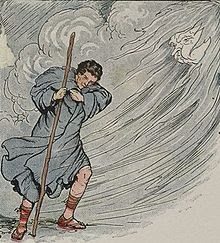This is where the term Techno-animism was coined. Allison discusses Japanese toy production, especially after WW2. After the war Japan needed to rebuild itself as a nation and toys and technology were two areas of strength. Allison also discusses Japan's history of animism stemming from the spiritual belief in Shinto that all things possess a spirit or soul with the added influence from Zen Buddhism. Somewhat inherent in their culture, even new technology could hold spiritual powers. An example that she discussed in depth was the manga character Astro Boy ( “Mighty Atom”)manga created by Osamu Tezuka. He was half boy, half robot and a very popular character. Unlike the west where robots were depicted as untrustworthy and usually feared if portrayed in movies.
This is mecha animated by Shinto, Japan’s religion of animism in which everything is endowed with a spirit and spirituality imbues the whole universe from boulders to ants. Not particular to the main character, roboticization has seeped into the very fabric of life itself here, expressed as a universal principle where the fusing of the natural and mechanic is akin to a spiritual truth. Pg 63
Not only is boundary-crossing promiscuity rampant here, in the sense that there seems no limit to what can be conjoined and cross-pollinated with something else, but also technology (mecha) is a key component to the way life of all kinds is constituted—a priority the Japanese state placed on technology as well in its reconstruction efforts following the war. Taking account of the centrality of mecha in Japanese play goods throughout the postwar period to the present, I call this aesthetic techno-animism. Pg 13














